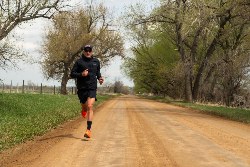Call for zero beach drownings this summer
MEDIA RELEASE
A fun day out at the beach turned to tragedy for the 15 people last summer who drowned at unpatrolled beach locations.
As 4,000 volunteer lifeguards begin to head out on patrol for another summer season, they are pleading for people to choose a patrolled beach and swim between the flags so this year doesn’t see a repeat of those drowning statistics.
The patrol season officially begins this Labour Weekend from the Far North down to Raglan along with Mount Maunganui beaches and some in the Coromandel. Patrols will continue to roll out across the rest of the Bay of Plenty and lower North Island and into the South Island throughout November as the weather warms up.
Surf Life Saving New Zealand national lifesaving manager Allan Mundy says during the 2015/16 summer season, lifeguards saved 1,517 people from life threatening situations.
“Sadly, there were 57 preventable* drowning deaths last summer (October 24, 2015-March 22, 2016) of which 15 occurred at beaches. None of those were at patrolled locations. We cannot stress enough, the importance of being prepared and choosing one of our 80 patrol locations nationwide so that we can be there for you if you get into trouble,” he says.
Of the 15 beach drownings last season, the standout cause was rips with seven deaths directly resulting from swimmers getting caught in them.
Mr Mundy says a lot of people panic when they find themselves caught in a rip and they tire themselves quickly by trying to fight against it.
“The safest place to swim is always between the flags as lifeguards actively seek out the safest place on the beach to set them up and will regularly move them throughout the day as the surf conditions change,” he says.
Rips are caused by complex interactions between the sea (tides, waves, current) and the shape of the shore bed. As waves travel from deep to shallow water, they eventually break near the shoreline. Mr Mundy says all of this water needs to get back to sea and a rip current is this happening.
“As waves break, they generate currents that flow both offshore (away from the coast) and alongshore (along the coast). The larger the surf, the stronger the rip current will be. Outgoing tides also increase the strength of the rip as more water is heading out to sea and a shallower water body moves faster than a deep one. However this is where things get confusing, he explains.
“At the shore end of a rip is often a calm deep pool of water “the hole.” It is this calm water that catches more people off guard than any other part of the rip, simply because of the calm deep water; it seems so tranquil, especially when either side of it are breaking waves. These holes, even on a small surf day, can be several meters deep especially at high tide. They are so dangerous because when people get into them and can’t touch the bottom, the current will carry them into the rip channel in a matter of minutes.”
Anyone who finds themselves caught in a rip should lie on their back and raise their hand to signal for help. If you spot someone in a rip at an unpatrolled beach, ensure your own safety and call 111 and ask for Police.
For more information about Surf Life Saving and patrolled beach locations visit www.surflifesaving.org.nz.
*There was a total of 61 drownings between October 24, 2015 and March 22, 2016 with 57 considered preventable. The other four were a result of either suicides or road vehicle accidents.
Key safety messages:
· Choose a patrolled
beach and swim between the flags (www.findabeach.co.nz)
·
Always keep a very close eye on children in or near the
water. Don’t overestimate you or your children’s ability
to cope in the conditions. Preferably be in the water next
to them at all times on a surf beach.
·
Get a friend to swim with you - never swim or surf
alone.
· Watch out for that rip- rips are
calm, deep patches of water close to shore that can
sometimes have waves breaking to the side. Rippled,
discoloured or foamy water with debris can also mean there
is a rip present.
· Be smart around rocks:
whether fishing or exploring at the beach, rocky outcrops
can be very dangerous in large surf. When fishing, always
wear a lifejacket. Never stand on a rock outcrop that is
already wet (a sure sign waves will be washing over it) and
always face the ocean; never turn your back on the
sea.
· If you’re away from home, check
with the locals and ask them about the conditions and the
safest place to swim.
· If in doubt, stay
out!
· If you spot someone in trouble at
an unpatrolled beach, ensure your own safety and dial 111
and ask for
Police.
Ends


 Braden Currie: Sets Sights On The Ironman North American Championships In Texas
Braden Currie: Sets Sights On The Ironman North American Championships In Texas Whanganui Regional Museum: Historic Wedding Dress Unveiled, A Piece Of Marton’s Heritage
Whanganui Regional Museum: Historic Wedding Dress Unveiled, A Piece Of Marton’s Heritage Donovan Ryan: Local Runner Takes Out Frontrunner Christchurch Marathon
Donovan Ryan: Local Runner Takes Out Frontrunner Christchurch Marathon University of Auckland: Tributes Flow For Much Loved Pacific Leader Melegalenu’u Ah Sam
University of Auckland: Tributes Flow For Much Loved Pacific Leader Melegalenu’u Ah Sam NZEI: Ministry Of Education Cuts Will Disproportionately Affect Pasifika
NZEI: Ministry Of Education Cuts Will Disproportionately Affect Pasifika Day One Hapai te Haeata: Call To Action For Young Filmmakers Against The Backdrop Of Funding Cuts
Day One Hapai te Haeata: Call To Action For Young Filmmakers Against The Backdrop Of Funding Cuts